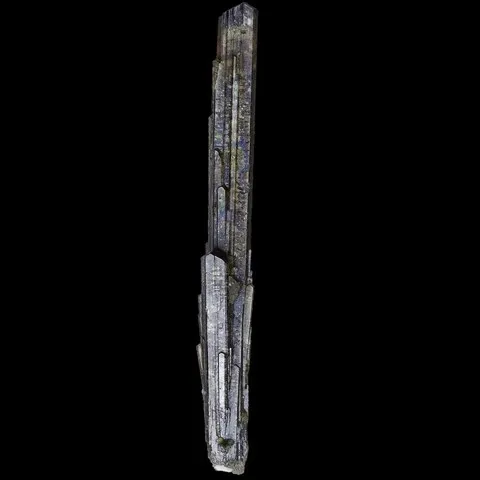ALLANITE
Class : Silicates
Subclass : Sorosilicates
Crystal System : Monoclinic
Chemistry : (Ce,Ca)2(Al,Fe)3(SiO4)3(OH)
Rarity : Uncommon
Allanite is a member of the group of epidote in which it represents the iron and rare earth elements rich term (cerium, lanthanum, neodymium, etc...). According to the dominant rare earth element there are several species : allanite-Ce, allanite-Nd, allanite-La, etc... It owes its name to the Scottish mineralogist Thomas Allan who discovered the species. Allanite crystallized in thick tablets, sometimes sticks or needles of brown, black, or brown-yellow. Because of its content of uranium and thorium (up to 2%), the crystals are generally metamict (disordered on the atomic scale). It is an accessory mineral of granites, pegmatites and syenites. It is found more rarely in metamorphic rocks, pyrometasomatic deposits or in some lavas (dacites). It is a common mineral but often occurs in very accessory and in very small crystals. Allanite can be used as cerium and rare earth ore. The macro-samples are only for the collection but because of its content of radioactive elements, allanite is also used by geologists for rocks datations.
Main photo : 3.3 cm allanite-dissakisite crystal from Trimouns, Ariège, France
Allanite in the World
Allanite in France
Allanite is known in France in the pegmatites of the pink granites of Ploumanac'h in the Côtes d'Armor where crystals can reach 11 cm, and in beautiful brown gemmy crystals (up to 3 cm) on dolomite of the large talcum deposit of Trimouns in Ariège.
Twinning
Allanite commonly presents polysynthetic twins on {100}, impossible to identify with the naked eye.
Fakes and scams
No scam known for this mineral.
Hardness : 5,5 à 6
Density : 3,5 to 4,2
Fracture : Conchoidal to uneven
Trace : Grey
TP : Opaque to transparent
RI : 1,715 à 1,791
Birefringence : 0,018 to 0,031
Optical character : Biaxial -
Pleochroism : Green to brown
Fluorescence : None
Solubility : Hydrochloric acid
Magnetism : Paramagnetic
Radioactivity : Weak





